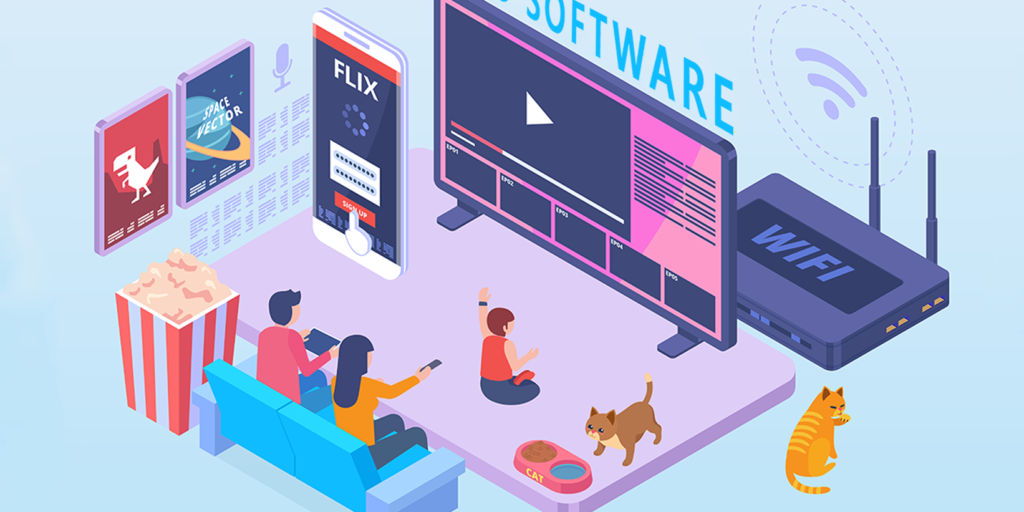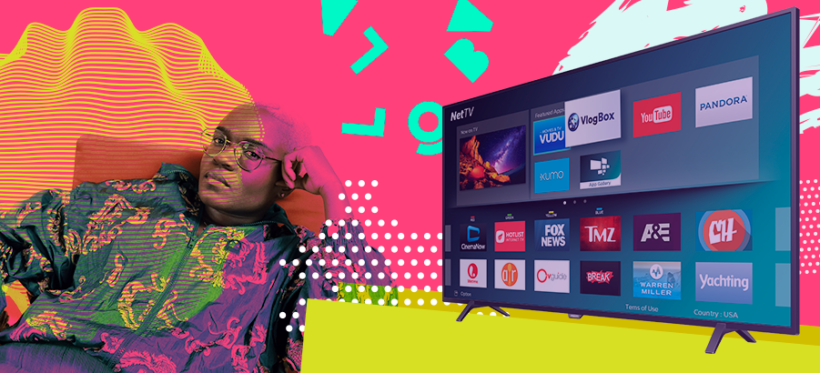The field of marketing and advertising is one that is expanding daily. It makes sense to adjust advertising tactics in light of the many shifts in how people use the internet.
One of the newest forms of online advertising aimed at grabbing people’ attention is programmatic advertising. In essence, programmatic advertising is the real-time purchase and sale of web advertising services. Selecting the ideal platform for advertising is one of the biggest challenges facing advertisers.
The main problem that programmatic advertising aims to address is this. It involves automating and streamlining the purchase of advertisements through the use of artificial intelligence (AI) in a bidding auction. Advertisers have more discretion over the amount they spend on a campaign rather than negotiating based on pre-established costs. There are no middlemen involved in this situation, unlike with RFPs and negotiations.
How Programmatic Advertising Works

Programmatic strategies have emerged as the leading methods for advertising evolution over the various milestones. These days, advertising inventory is purchased and sold digitally on a per-impression basis through a programmatic auction. We refer to this as real-time bidding (RTB). An advertiser bids on a user impression on a demand-side platform (DSP) according to the audience segmentation they have selected. The publisher’s website or ad network platform will instantly display the advertiser’s campaign if it is successful.
READ MORE: The History Of CTV And OTT
Advertisers may manage and optimize their campaigns based on their ideal audience(s) thanks to DSPs. This can contain specific user behaviors, regions, and demographics. AI systems give advertisers the ability to decide where to place a certain campaign at a specific moment for maximum user reach, saving them money instead of having to pay to promote on a single platform or website.

In the realm of programmatic advertising, CTV media and OTT advertising firms are significant participants. This is due to the fact that this type of advertising has given these platforms a way to interact with just interested consumers, optimizing all of the efforts made in the advertisement. Since the coronavirus outbreak, an increasing number of people are consuming content online.
Many people inquire about the distinctions between CTV and OTT, but in reality, the two tend to work together. This has presented OTT and CTV streaming platforms with an ideal opportunity to reach a broad range of users. For instance, because to quarantine, people watched 92% more Netflix in 2020 alone. Businesses need to target as many people as possible in order to maximize their advertising efforts in order to stay alive. Connected TV programmatic advertising and OTT advertising have revolutionized the way that advertisers reach users where they spend the majority of their time these days.
READ MORE: Although CTV Ad Targeting Is Becoming More Avanced, Data Quality Is Not

Connected TV Advertising Platforms
The acquisition of CTV media saw a meteoric rise in the late 2000s. The CTV ad expenditure scene experienced a whopping 330% surge by the end of the decade. The growth of CTV advertising coincided with the rise of Connected TV firms vying for attention. Since then, the industry has only expanded.
Ad campaigns for connected TV providers are expected to generate over $10.81 billion in revenue by 2021.
Based on their Connected TV devices, the following are some of the leading CTV advertising firms and Connected TV examples:
- Roku
With around 85 million subscribers nationwide, Roku is the biggest CTV platform. This represents just roughly 46.9% of CTV viewers in the US, despite the staggering figures. The company’s specialty is offering TVs and standalone players that let customers access a wide variety of entertainment. If customers pay the necessary monthly subscription fees, they can also access the OTT platform using Roku. - Amazon Fire TV
Due to its wide range and abundance of devices, Amazon Fire TV is currently the second most sought-after product on the market. Roku and Amazon Fire TV constantly trade places with one another. A prime illustration of the fierce rivalry amongst CTV firms is the Connected TV advertising. Connected TV devices, including the Fire TV Cube, Fire TV stick, and Fire TV stick 4k, are sold by Amazon Fire TV. All of these have several desirable features, such streaming for Amazon Video and Alexa. - Google Chromecast
Google created the Chromecast gadget to add smart features to a television that has already been purchased. With just an HDMI connection, customers may access streaming services on over-the-top (OTT) platforms such as Netflix, Hulu, and Disney+. The device resembles a dongle. Applications to enhance the CTV media experience can also be installed on the device.

CTV Companies on Connected TV Advertising
What is CTV advertising and what is connected TV?
An internet-connected TV set is the basic definition of CTV. Accordingly, the definition of connected TV advertising is any type of advertising that reaches consumers while they are consuming content on television screens. CTV advertising consists of programmatically aired, non-skippable advertisements.
Regarding advertising, the more precise definition of CTV is that it’s a private market. The CTV advertising inventory provides advertisers with targeted and exclusive placement options. Additionally, there are comparatively fewer bidders in this setting, increasing the winning percentages. Therefore, CTV plays a significant role in programmatic advertising. Here are some additional justifications for its importance in the current landscape of programmatic advertising:
READ MORE: CTV Watching Hours Increase By 21%
-Better chances of winning the audience’s attention
-More accurate fast-driven advertising strategies
-There are better tracking measurements
-Precise control of the frequency of ads
-Premium and exclusive advertising opportunities on CTV platforms.
-CTV Companies on OTT Advertising Platforms
OTT advertising, as opposed to CTV, focuses on marketing to consumers who watch OTT TV content via internet streaming services. This is referred to as using OTT and CTV when a user streams content onto a television.

OTT advertising should ideally function similarly to other online advertising formats. Except that when they utilize the OTT platform online, users see the advertisements. Among the most widely used platforms are HBO Now, Netflix, and Hulu.
OTT platforms can be preinstalled on a TV or Smart TV, or they can be installed using a CTV device. By using CTV advertising on OTT platforms, advertisers can target users more effectively. The genuine programmatic OTT definition on CTV devices will be advantageous to advertisers for the following reasons as well:
- Lower Advertising Expenses
Advertisers had to pay for advertising on both OTT and CTV platforms separately prior to CTV businesses integrating OTT services on their devices. Recent statistics indicates that the majority of advertisers spend about $9 billion to advertise on websites like Hulu. They would then have to pay almost $8.2 billion for CTV advertising. However, advertisers can spend much less with more effective targeting tactics made possible by programmatic advertising and the mix of OTT and CTV. This is a result of their ability to decide which advertisements to run and where to post them. Additionally, by combining the two services, they become a single entity, reducing the likelihood of double-spending. - Wider reach This year, at least 765 million people worldwide have used OTT services at least once a month. Additionally, data indicates that 183 million Americans used CTV streaming on a monthly basis at the end of 2018. By 2022, this amount is expected to rise by 204 million.

It’s becoming evident that CTV and OTT advertising are crucial components of any marketing plan. The combination of CTV and OTT, two major innovators in programmatic advertising, may reach over 300 million people. Programmatic advertising can reach a wider audience because it is also in a controlled environment.
- Access to Multiple Premium Audiences: Almost all members of the generation Z community and a sizable number of millennials are the primary targets of OTT advertising. 71% of millennials were found to utilize at least one type of over-the-top (OTT) media for entertainment, per the statistics. Furthermore, one in two of these individuals used a laptop or mobile device to consume OTT media. Gen Z and millennials are always included in the genuine definition of OTT. But CTV media is becoming more and more popular with people of all ages, even baby boomers. Baby boomers account for 38.5 million of CTV viewers, not much behind Generation Z’s 45.7 million viewers. Taking the lead with roughly 48.5 million viewers is Generation X.
More premium access to a wider audience is possible when OTT and CTV are integrated, bringing together the three generations. Prime time is when the majority of baby boomers and Generation X will be available, therefore programmatic advertisements for them can be scheduled during this period. The ease of crossover between OTT and CTV is further facilitated by the availability of OTT platforms on CTV media. Users are now accustomed to programmatic advertising and are ignorant of a more successful approach to using OTT media, or OTT/CTV commercials, to target the appropriate audience with ad campaigns.
Radiant and America Nu, offering to elevate your entertainment game! Movies, TV series, exclusive interviews, music, and more—download now on various devices, including iPhones, Androids, smart TVs, Apple TV, Fire Stick, and more.



